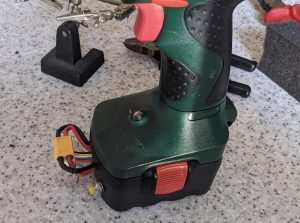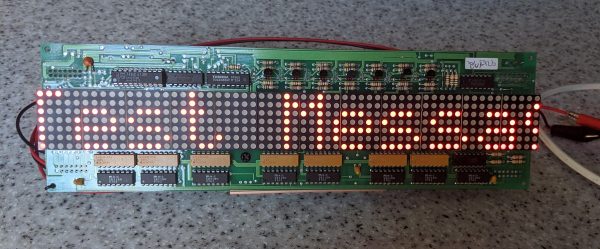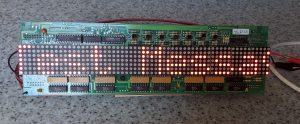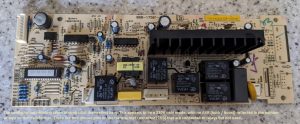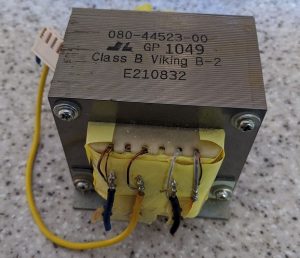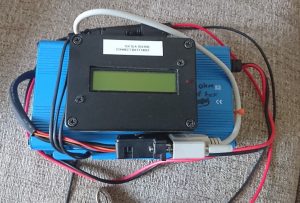I built a bench power supply for a relative which had to be low cost and I decided to use Bangood as my source of most of the parts to reduce cost. I purchased the case, relay module, DC-DC converter board, panel meter and the output banana jacks from Bangood and the rest came from my spares box. I had a number of issues with these cheap parts as they didn’t work as intended or simply just didn’t work. But more on that later.
The XL4016 based switch mode DC-DC converter board only allowed you to adjust the voltage output and it did not have a current limiter on it. The module is rated at 8 amps output but the tiny heatsinks suggest that it’s probably half that and the transformer feeding it is only rated at 2 amps max. I did a review of the XL4016E1 DC-DC converter module separately; see this link for the first impressions and the flaws I found with it.

So I decided to make an auto cutout circuit that works by monitoring the current via an ACS712-5A sensor. The ATtiny85 switches the PSU load on and off via a push button toggle. Useful as the module I’ve used does not have remote off / on facility and it’s handy to turn the output off whilst connecting up your projects rather than having it permanently on. When the output is on the sensor is read and if the current goes above 1.75 amps the output is disconnected and a red LED lights. A green LED indicates that the output is on and all is OK. I used a dual colour LED that simply turns red or green depending on condition. Originally I was going to measure temperature of the XL4016 module too using an LM35 but there were not enough pins on the ATtiny85 and the switching noise from the module produced erratic analog readings that I could not fully filter out. This didn’t present a problem with current sensing however.


